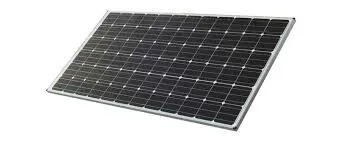solar panels what size do i need
Choosing the Right Size of Solar Panels for Your Needs
In recent years, the demand for renewable energy, particularly solar energy, has surged. Solar panels are a key component of this transition, enabling homeowners and businesses to harness the sun’s energy and convert it into electrical power. However, one common question arises during the installation process “What size of solar panels do I need?” The answer is not straightforward, as it depends on several factors, including energy consumption, available roof space, and the characteristics of the solar panels themselves.
Understanding Your Energy Needs
The first step in determining the size of solar panels you need is to analyze your energy consumption. Look at your electricity bills from the past year to find out your average monthly energy usage measured in kilowatt-hours (kWh). This will provide a baseline for calculating how much energy you need your solar system to produce.
For example, if your household uses an average of 1,000 kWh per month, you would need to generate approximately 1,000 kWh per month through your solar panels. It’s important to consider future increases in energy needs, such as new appliances or family additions, when assessing your energy requirements.
Evaluating Solar Panel Output
The next factor to consider is the output of the solar panels you are considering. Solar panels vary in efficiency and output, typically measured in watts. Most residential solar panels today have a capacity of between 250 to 400 watts per panel. Higher wattage panels generate more electricity, which is beneficial if space is limited.
For instance, if you choose a 300-watt solar panel, each panel would produce about 900 kWh annually, assuming optimal sunlight conditions. To determine how many panels you need, divide your annual energy requirement by the output per panel
If your household needs 12,000 kWh annually, the equation would be
12,000 kWh / 900 kWh per panel ≈ 13.33 panels.
This means you would need approximately 14 panels to meet your yearly energy needs, given optimal conditions.
Assessing Available Roof Space
solar panels what size do i need

Having determined how many panels you need, assess the available roof space for installation
. Each solar panel requires a specific amount of space, and factors such as roof orientation, angle, and shading (from trees or other buildings) can significantly affect the efficiency of your solar energy system.If your roof has limited space, consider installing higher-efficiency panels that produce more energy in a smaller footprint. It’s also essential to consider local regulations regarding set-backs and height restrictions that can affect the area available for solar installations.
Considering System Losses
It's important to remember that not all the energy generated by your solar panels will be available for use; some energy is lost in the system. Common losses can occur due to inverter efficiency, shading, or temperature effects; it’s prudent to account for around 10-20% loss when calculating the number of panels needed.
Using the previous example, if you estimate a 15% loss, you would need to increase your required energy output to account for this
Annual energy requirement 12,000 kWh / (1 - 0.15) ≈ 14,117 kWh.
This adjusts your number of panels accordingly
14,117 kWh / 900 kWh per panel ≈ 15.7 panels.
You would round this to 16 panels, factoring in the losses.
Final Considerations and Consultation
When determining the size of solar panels needed for your energy requirements, it’s wise to consult with a solar energy provider. They can conduct a thorough site assessment, take into account local climate conditions (sunlight availability), and suggest customized solutions tailored to your specific needs and limitations.
In conclusion, determining the right size of solar panels for your home or business requires careful consideration of your energy consumption, panel output, available roof space, and potential system losses. By analyzing these factors and seeking professional guidance, you can design an effective solar power system that meets your energy needs sustainably and efficiently. Transitioning to solar energy is not only an investment in your future but also a crucial step towards making a positive impact on the environment.
-
String Solar Inverter: The High-Efficiency Solution for Smart Solar EnergyNewsJul.14,2025
-
Revolutionizing Rooftop Energy with the Power of the Micro Solar InverterNewsJul.14,2025
-
Power Independence with Smart Off Grid Solar Inverter SolutionsNewsJul.14,2025
-
On Grid Solar Inverter: Powering the Future with Smart Grid IntegrationNewsJul.14,2025
-
Monocrystalline Solar Panels: High-Efficiency Power for the Future of Clean EnergyNewsJul.14,2025
-
Bifacial Solar Panel: A Smarter Investment for Next-Generation Energy SystemsNewsJul.14,2025







